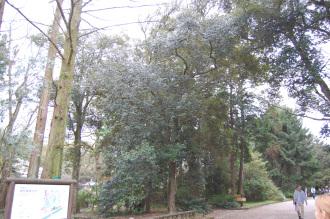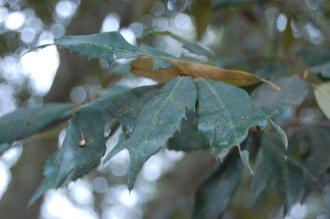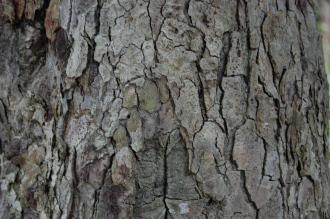
Quercus gilva (Kyoto Botanical Gardens, Kyoto, Japan)
Position: Full Sun to partial shade
Flowering period: Spring
Soil: Moist, well drained
Eventual Height: 30m
Eventual Spread: 20m
Hardiness: 7a, 7b, 8a, 8b, 9a, 9b, 10a, 10b
Family: Fagaceae
Quercus gilva is an evergreen tree with an irregular habit. Its leathery leaves are dark green above, whitish below, elliptic with spiny margins, up to 12cm long and 3.5cm broad. The trunk can achieve a diameter of 3m. Its dark gray bark forms flaking platelets with age. The male flowers of the tree are yellow green catkins and are up to 11cm long. Its fruit is an ellipsoid acorn, 2cm long and 13mm broad, in a half round cup.

Quercus gilva Leaf (Kyoto Botanical Gardens, Kyoto, Japan)
Quercus gilva is native to Japan, Taiwan, South Korea and south east China. In its native habitat it grows in broad-leaved mountainous forests.
The etymological root of the binomial name Quercus is derived from the Latin name for an Oak tree, but some authorities believe it to be derived from the Celtic quer meaning ‘fine’ and cuez meaning ‘a tree’. Gilva is derived from the Latin gilvum menaing ‘pale yellow’.

Quercus gilva Bark (Kyoto Botanical Gardens, Kyoto, Japan)
When available the landscape architect may find Quercus gilva useful as a large broadleaved evergreen specimen tree.
Ecologically, Quercus gilva acorns are eaten by mammals and some birds.
Quercus gilva prefers moist, well-drained soils. It tolerates most pH of soil.
Quercus gilva requires little maintenance.

Landscape Architecture

